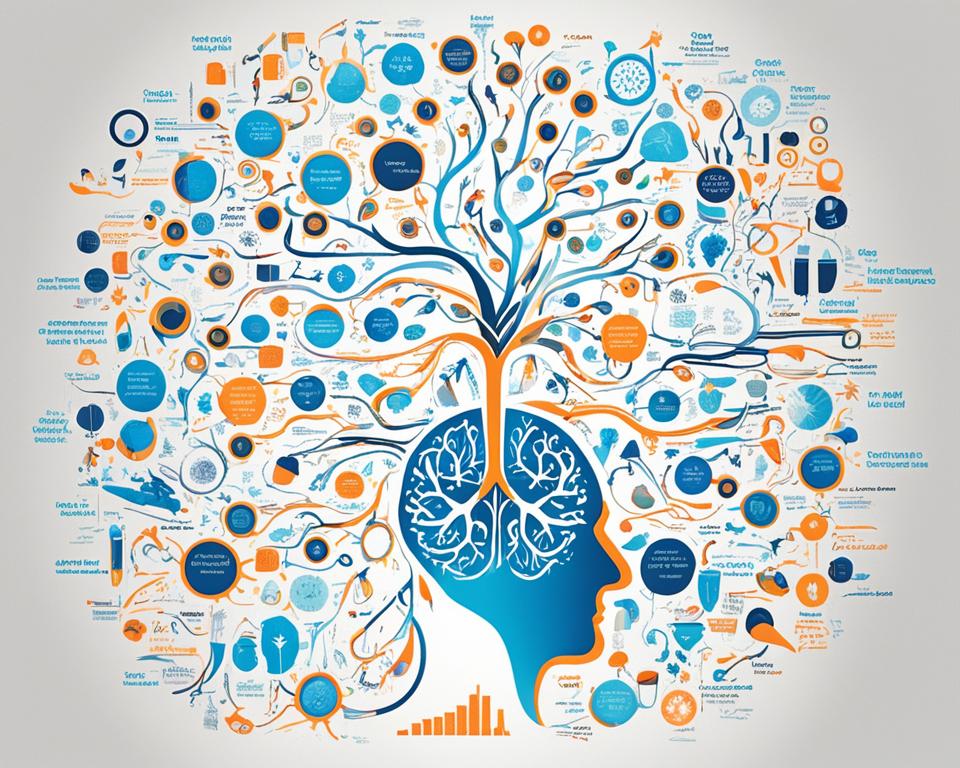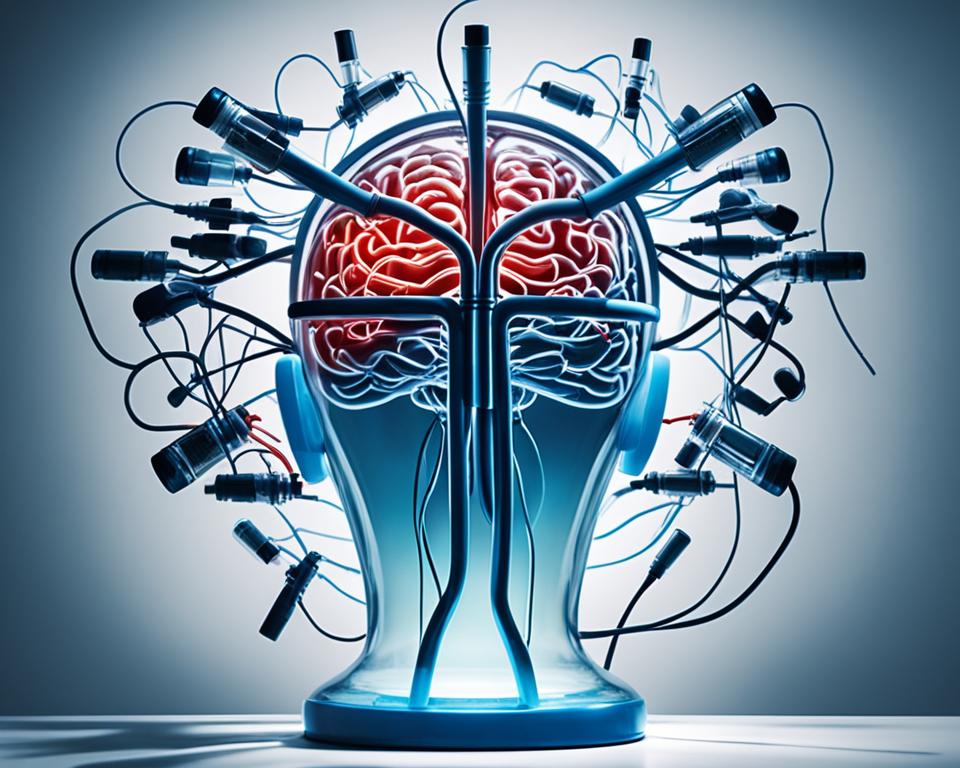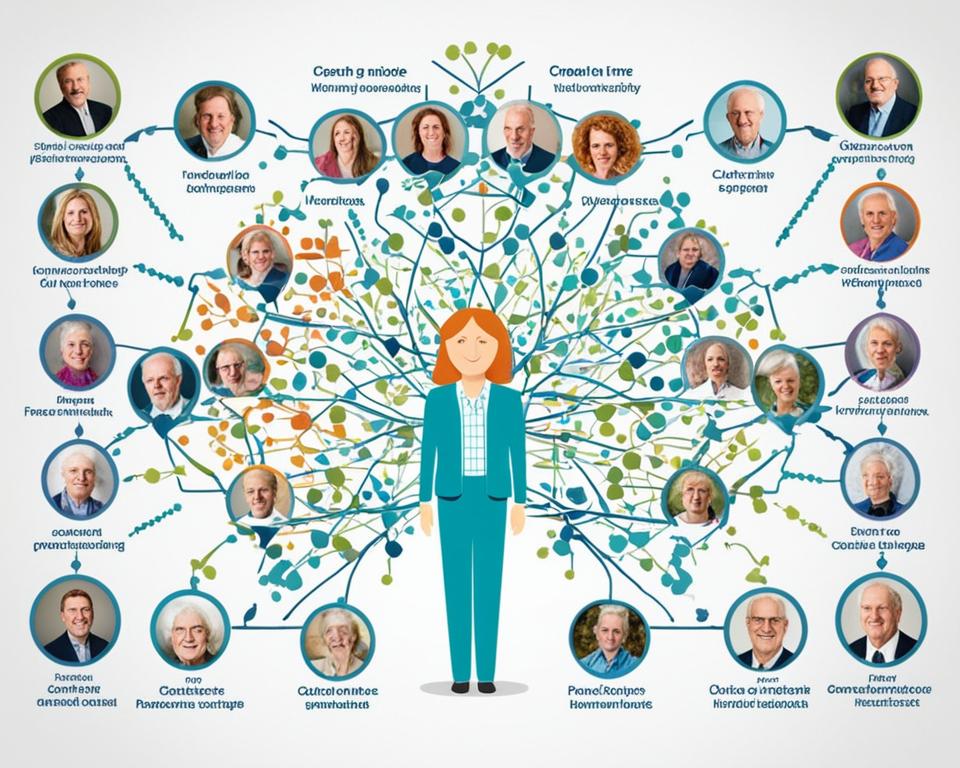
As a coding professional, you understand how important diagnosis codes are. They can determine your payment just like service codes. Knowing about the latest ICD-10-CM update is key for claims starting October 1, 2023. This update affects common diagnosis codes in family medicine, such as for Parkinson’s disease (PD).1
Parkinson’s disease is a type of neurodegenerative disorder. It comes with many issues that affect care in the short and long term. It can lead to dementia, trouble swallowing, walking problems, and speech changes. Understanding these side effects is crucial for both coders and doctors.1 It’s vital to document and code all related problems to show the full scope of the patient’s condition.1
Key Takeaways
- Parkinson’s disease affects approximately one million people in the United States.1
- Around 60,000 Americans are diagnosed with PD each year, not accounting for undetected cases.1
- Worldwide, there are up to 14 million individuals diagnosed with PD.1
- Parkinson’s disease is classified under ICD-10-CM code G20.1
- PD medications fall into three categories, including drugs that increase dopamine levels and those that control non-motor symptoms.1
Understanding Parkinson’s Disease
Parkinson’s Disease (PD) is a common health issue. It affects about one million Americans.2 Every year, around 60,000 new cases are found in the U.S.3 There could be many more undiagnosed cases. Globally, up to 14 million endure this condition.2
Neurodegenerative Nature of the Disease
In PD, certain brain cells break down, leading to a lack of a brain chemical called dopamine.2 This causes four primary symptoms: tremor, stiffness, slow movement, and trouble with balance.2
Prevalence and Impact
It often strikes people over 60, but younger cases exist. Celebrities like Michael J. Fox and Muhammad Ali battled PD at younger ages.3 PD affects roughly 1 million in the U.S.3
Early Signs and Symptoms
Its early signs may include slight shaking and stiffness in a hand or leg. Problems with walking or getting up from a chair and small handwriting can also be signs. Other symptoms like a stooped posture and a face with a ‘masked’ look show up.
Complications of Parkinson’s Disease
Movement and Motor Difficulties
Parkinson’s disease is a condition that can make people’s bodies shake or become very stiff. This can look like the head moving suddenly or the hands shaking.
The body may also feel like it’s “locked up” and can’t move smoothly.4 These changes can hugely affect a person’s daily life. For some, these problems and their effects can be very serious.
Non-Motor Symptoms
People with PD may face other challenges beyond movement. This can include trouble walking safely, keeping their balance, and often feeling at risk of falling. There might be difficulties in writing, getting dressed, and addressing personal hygiene.
Eating and swallowing can also become hard, making it tough to speak clearly or eat without choking. Others might experience issues with going to the bathroom or having trouble sleeping. In some cases, people might even see or believe things that are not there, and their behavior can change a lot.4

Treatment Options for Parkinson’s Disease
Treating Parkinson’s Disease (PD) involves many steps. It focuses on easing both motor symptoms and non-motor symptoms linked to the disease. Doctors use various medicines for PD. They can help increase dopamine in the brain, target different brain chemicals, or tackle non-motor symptoms directly.5
Medications for Increasing Dopamine Levels
Dopamine precursors like levodopa are the top choice for PD. They enter the brain and change into dopamine. Other drugs can either act like dopamine or slow their breakdown. Together, they aim to keep dopamine levels up, relieving the symptoms of PD.5
Drugs Targeting Other Neurotransmitters
Another group of medications works on different brain chemicals. They help with PD symptoms by targeting acetylcholine, for instance. Anticholinergic drugs lessen tremors by affecting how the body uses acetylcholine.5
Treatment for Non-Motor Symptoms
Drugs in the third group focus on the non-motor symptoms of PD. They help with issues like sleep problems, seeing or hearing things that aren’t there, or troubled behavior.5
Surgical Interventions
Sometimes, PD patients might need surgery. Procedures like Deep Brain Stimulation, pallidotomy, and thalamotomy can be done to improve their symptoms and life quality.5
parkinson’s disease icd 10
Coding and Sequencing Rules
In the ICD-10-CM, Parkinson’s disease is placed in Chapter 6 for Diseases of the Nervous System (code range G00-G99).4 Searching in the Alphabetic Index, you’ll find “disease,” then “Parkinson’s,” leading to code G20.4 When you look up “Parkinson’s,” you’ll be led to “Parkinsonism.” Here, you review several terms related to this.4
Dementia and Parkinson’s Disease Coding
Under Parkinson’s dementia, you’ll also see code F02.80 in brackets. It shows that this code is a secondary one.5 For coding, place G20 for PD first, followed by the manifestation(s).5 Additionally, codes F02.80 and F02.81 detail dementia in diseases classified elsewhere. This is with or without behavioral issues.5
ICD-10-CM Updates for Parkinson’s Disease
The current single code for Parkinson’s disease (G20) will soon have more detailed types. This will help doctors be more specific in diagnosis and treatment. This also ensures proper reimbursement.5 Starting from October 1, 2023, the new ICD-10-CM codes for Parkinson’s will be in effect. They are:
- 4 G20.A1 (Parkinson’s disease without dyskinesia, without mention of fluctuations)
- 4 G20.A2 (Parkinson’s disease without dyskinesia, with fluctuations)
- G20.B1 (Parkinson’s disease with dyskinesia, without mention of fluctuations)
- G20.B2 (Parkinson’s disease with dyskinesia, with fluctuations)
- 4 G20.C (Parkinsonism, unspecified)
These new codes make tracking different Parkinson’s subtypes easier. They also help manage disease complications better. This leads to improved care and proper reimbursement.54

The extended code set shows the many ways Parkinson’s disease can appear. It allows medical staff to report cases more accurately. This is crucial for such a complex disease.54
Capturing Complications and Severity
Parkinson’s disease (PD) brings several challenges like dementia and swallowing problems.
These issues really affect how people are cared for, both now and in the future.6 Because of this, it’s very important for those who work with the coding and documentation of PD to keep learning about it.
Documenting Associated Conditions
It’s vital to record all these problems in documents and codes. This helps tell the full story of the patient’s struggles with PD. Medicines for PD work in a few different ways, such as boosting dopamine or helping with non-motor issues.
Other problems that may not come directly from PD can be coded under Chapter 18 ICD-10-CM. It is listed under signs and/or symptoms.6
Importance of Clinical Documentation Integrity
PD falls under Chapter 6 of ICD-10-CM, codes G00-G99. The code G20 is for PD specifically in the Index.6 Even in hospitals where no direct care is given, PD gets coded. Knowing about all the possible complications helps professionals accurately show how serious PD is.6

Family History and Risk Factors
Most people diagnosed with parkinson’s disease icd 10 are 60 years or older. But some get it earlier, like actor Michael J. Fox and the late boxer Muhammad Ali did.5 A family history of parkinsonian disorders is a big risk. Genetic factors can also influence the chances of getting diseases like Parkinson’s. Besides, exposure to toxins, head injuries, or some health conditions might increase this risk.7
The exact causes of parkinson’s disease icd 10 are still a mystery. But researchers have found many things that might raise the risk. Knowing about family history and genetics can guide both doctors and patients. They can take steps to manage and maybe slow down Parkinson’s symptoms’ start.5

Atypical and Early-Onset Parkinson’s Disease
People usually find out they have Parkinson’s disease (PD) at 60 or later. But some get diagnosed earlier, like actor Michael J. Fox and boxer Muhammad Ali.5 The disease has its own code in the 2024 ICD-10-CM, called G20.5 This code is under the group G20-G26 in ICD-10-CM.5 For detailed billing, other codes should be used, not G20.5 The G20 code is new in the U.S. ICD-10-CM since October 1, 2023.5
Different illnesses are shown in unique ways, like with memory issues, anxiety, and more. Each has its own ICD-10-CM code.5 A slight decline in thinking because of known health issues has the F06.7 code.5 Other nerve system disorders have cords in the G00-G99 group.5
The 2024 codes have G20.A1, for Parkinson’s without certain movement issues.4 G20 covers Parkinson’s types like hemiparkinsonism and paralysis agitans.4 G20.A1 is a new code since October 1, 2023.4 Another code, G20.C, is for a non-specific form of Parkinsonism, not Parkinson’s disease NOS4.
A new G21.9 code for secondary Parkinsonism also came in on October 1, 2023.8 In the G00-G99 group, Parkinson’s disease is a nerve system illness.8 This group doesn’t include certain conditions from birth, infections, or cancer.8 //
Coding Challenges and Considerations
“Code first” and “Use additional code” notes to help with the order of codes for certain illnesses. For instance, Parkinson’s disease is under ICD-10’s code G20 in the G00-G99 range.9 Diseases that affect the whole body, like diabetes, high blood pressure, and PD, should still get a cord. This is even if the patient is not getting active treatment. This rule is for when patients are in the hospital. However, always check the full guidelines.
Code First and Use Additional Code Notes
The notes “Code first” and “Use additional code” tell us how to list codes properly. They help choose the main and extra codes. This gives a clear view of the patient’s health and treatment given.9 Let’s take Parkinson’s disease for instance. First, you’d put code G20. Then, you might add codes for any related issues. These could include things like dementia.
Sequencing Rules and Guidelines
Getting the order of codes right is key for the right diagnosis and pay. Parkinson’s disease, even without treatment going on, must have a cord. This ensures that all PD and related issues, such as dementia, are noted correctly.3 In the US, about 1 million people face Parkinson’s Disease (PD).3 PD can cause many health problems, underlining why accurate coding and sequences are so crucial.
Conclusion
Parkinson’s disease is a tough condition that affects the brain and movement. It’s important for those who code and document medical information to be on top of things. This helps doctors and other health workers know how to help better.10
Knowing a lot about Parkinson’s, including its possible problems like memory loss, is key. It helps professionals describe a patient’s medical path accurately. Doing this right means patients get the correct support. It also helps healthcare workers understand how many people have Parkinson’s and its effects.11
As our code for Parkinson’s gets more detailed, everyone involved in care must work together. This means doctors, coders, and others must keep up with the latest to give the best care. With teamwork and keeping up, healthcare workers can use better data. This improves how they care for people with Parkinson’s.12
FAQ
What is the importance of preparing for the upcoming ICD-10-CM update for Parkinson’s disease?
Diagnosis codes on claims are key to getting paid. It’s crucial to prep for the ICD-10-CM update starting October 1, 2023. This update will change some codes, including those for Parkinson’s disease.
What are the most common complications associated with Parkinson’s disease?
Parkinson’s disease can lead to problems like dementia and dysphagia. These issues affect both short and long-term care. It is important to document and code these complications to show how severe the condition is.
How prevalent is Parkinson’s disease?
In the U.S., around one million people have Parkinson’s. About 60,000 new cases are found every year. Many go unnoticed. Worldwide, up to 14 million people are diagnosed with Parkinson’s disease.
What are the early signs and symptoms of Parkinson’s disease?
The early signs of Parkinson’s disease are noticeable but subtle. They include hand shaking, stiffness, walking difficulties, and small handwriting. Other signs are a stooped posture and a face that looks serious or “masked”.
What are the main categories of Parkinson’s disease medications?
Parkinson’s medications fall under three categories. Some drugs aim to increase dopamine levels. Others, like anticholinergic drugs, help with symptoms. There are also medications to manage non-motor symptoms.
How is Parkinson’s disease and dementia coded in ICD-10-CM?
In ICD-10-CM, Parkinson’s is under Chapter 6 (code range G00-G99). It’s expanding from one to five codes. For Parkinson’s disease with dementia, use code G20 plus a dementia code (F02.80 or F02.81).
What are the new ICD-10-CM codes for Parkinson’s disease subtypes?
Five new codes are coming for Parkinson’s disease subtypes. They include codes for Parkinson’s with and without specific symptoms. A general code for unspecified Parkinsonism is also being added.
Why is it important for coding and clinical documentation integrity professionals to build knowledge of Parkinson’s disease?
Professionals must understand Parkinson’s complications, like dementia. They impact care in a big way. Knowing the disease well is vital for good documentation and coding. It helps tell the full story of the patient’s illness.
What are some examples of atypical or early-onset Parkinson’s disease?
Although Parkinson’s usually appears after age 60, earlier cases exist. Notable examples include actor Michael J. Fox and the late boxer Muhammad Ali.
What are some key coding challenges and considerations for Parkinson’s disease?
Coding for Parkinson’s involves specific instructions and rules. Even without ongoing treatment, this condition must be recorded. This is a key part of reporting the patient’s health status.
Source Links
- https://medlearn.com/icd-10-coding-of-parkinson-s-disease-code-carefully/
- https://insideangle.3m.com/his/blog-post/parkinsons-disease-vs-parkinsonism-understanding-the-difference-is-essential-for-icd-10-code-assignment/
- https://practicalneurology.com/articles/2021-sept/parkinson-disease-iicd-10-cmi-coding
- https://www.icd10data.com/ICD10CM/Codes/G00-G99/G20-G26/G20-/G20.A1
- https://www.icd10data.com/ICD10CM/Codes/G00-G99/G20-G26/G20-/G20
- https://icd10monitor.medlearn.com/icd-10-coding-of-parkinson-s-disease-code-carefully/
- https://www.icd10data.com/ICD10CM/Codes/Z00-Z99/Z77-Z99/Z82-/Z82.69
- https://www.icd10data.com/ICD10CM/Codes/G00-G99/G20-G26/G21-/G21.9
- https://www.icd10data.com/ICD10CM/Codes/G00-G99/G20-G26/G20-
- https://www.ncbi.nlm.nih.gov/pmc/articles/PMC6354966/
- https://journals.plos.org/plosone/article?id=10.1371/journal.pone.0246342
- https://www.providermagazine.com/Issues/2023/Winter/Pages/Unveiling-the-October-2023-ICD-10-CM-Updates.aspx





